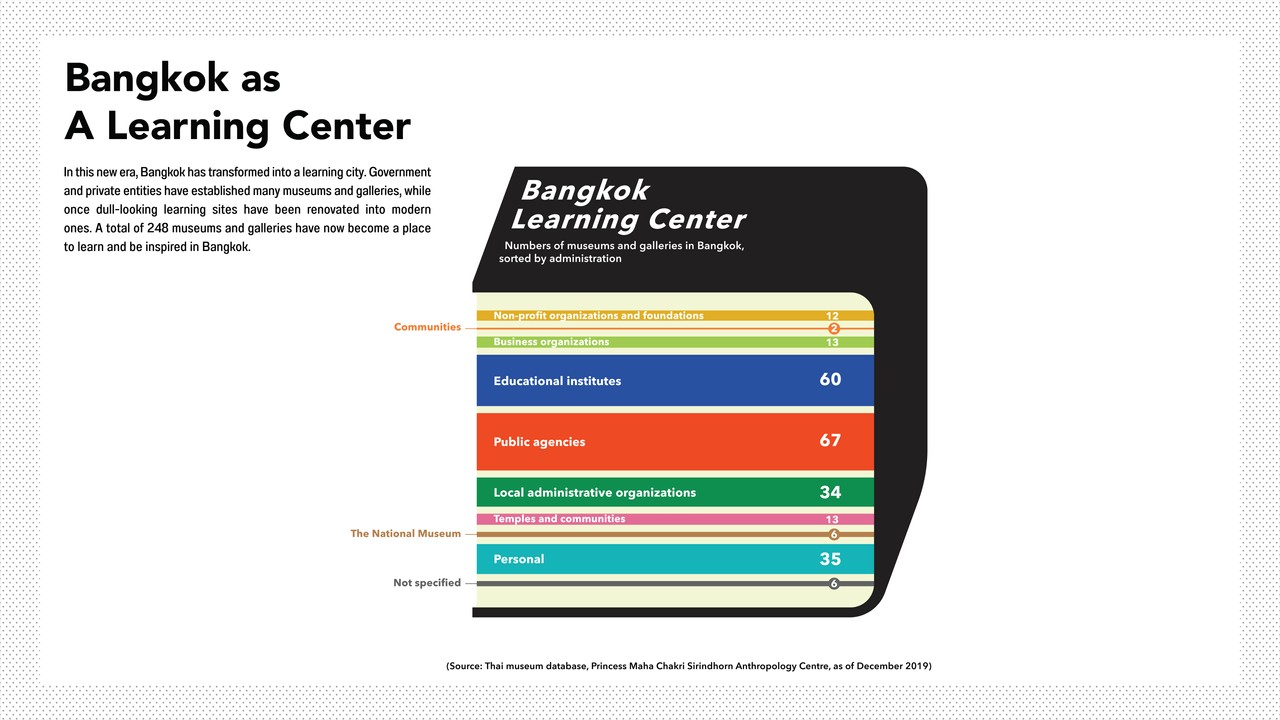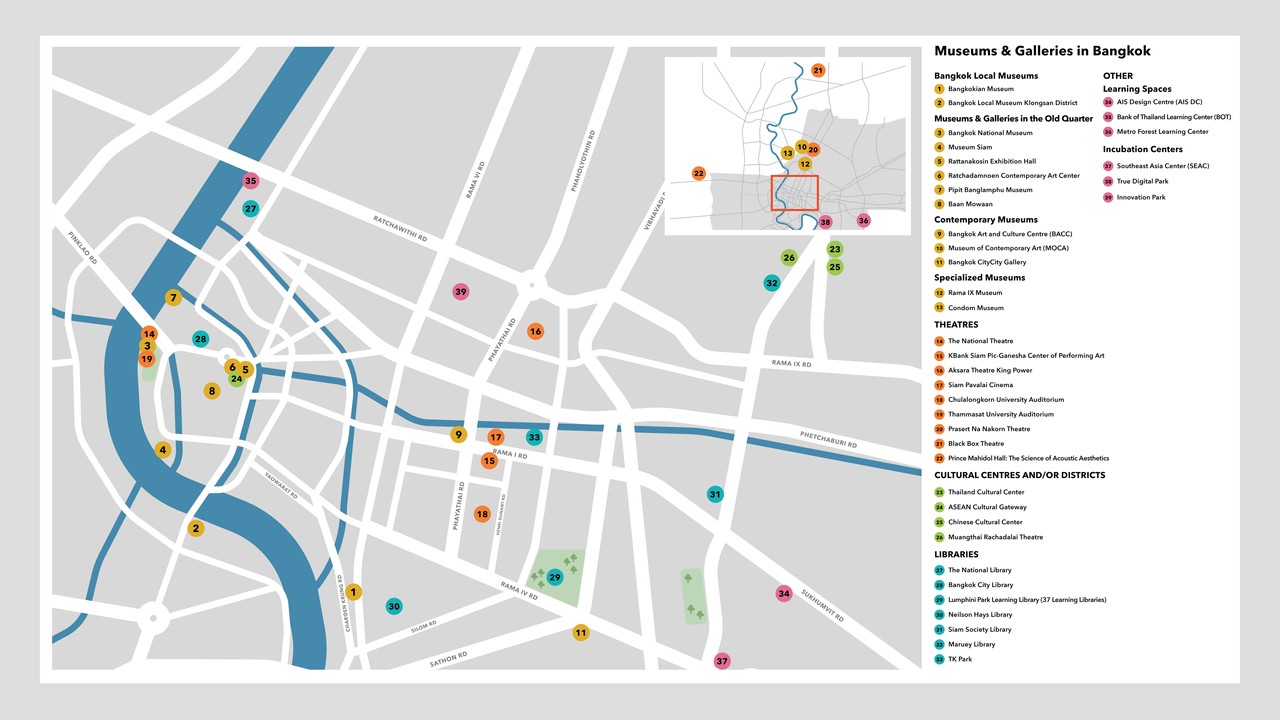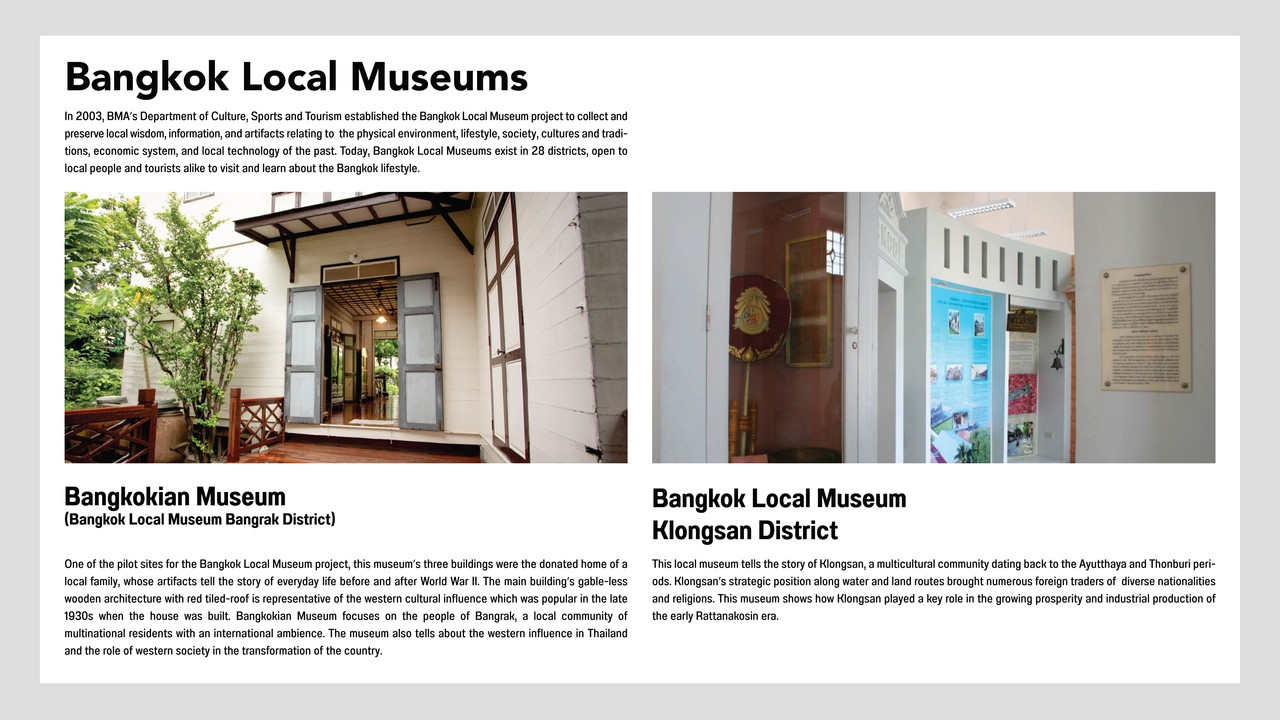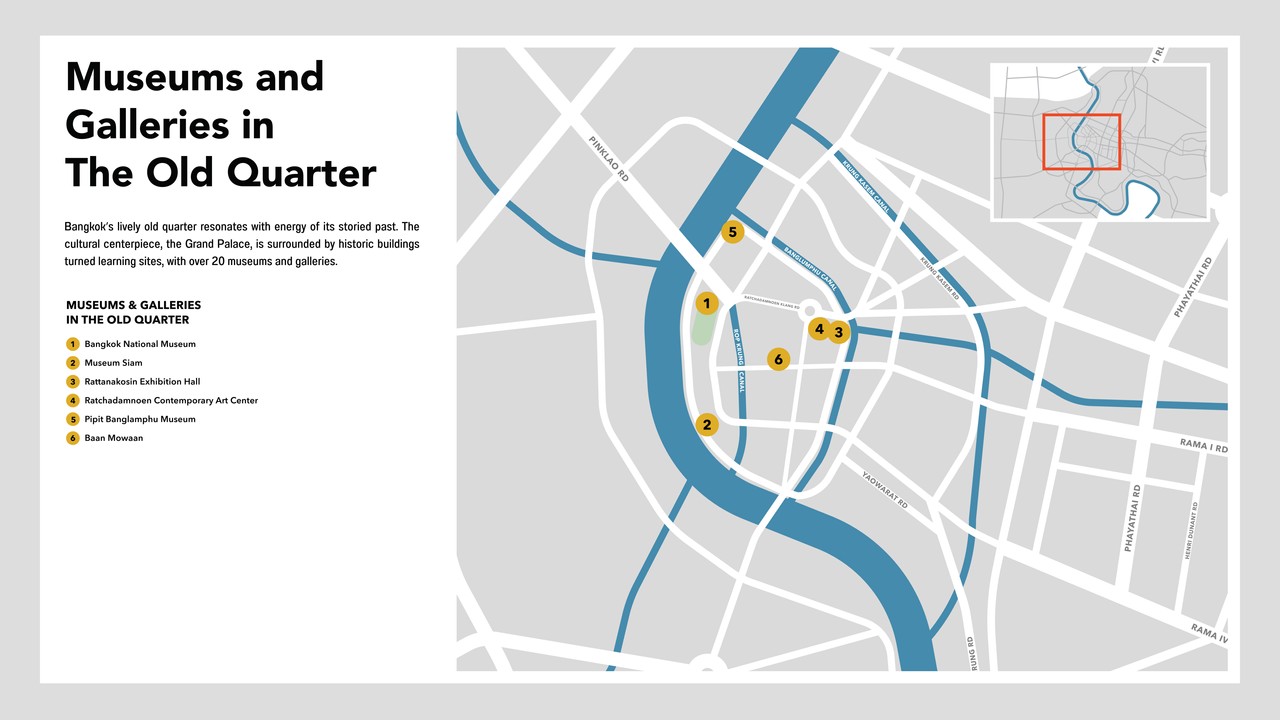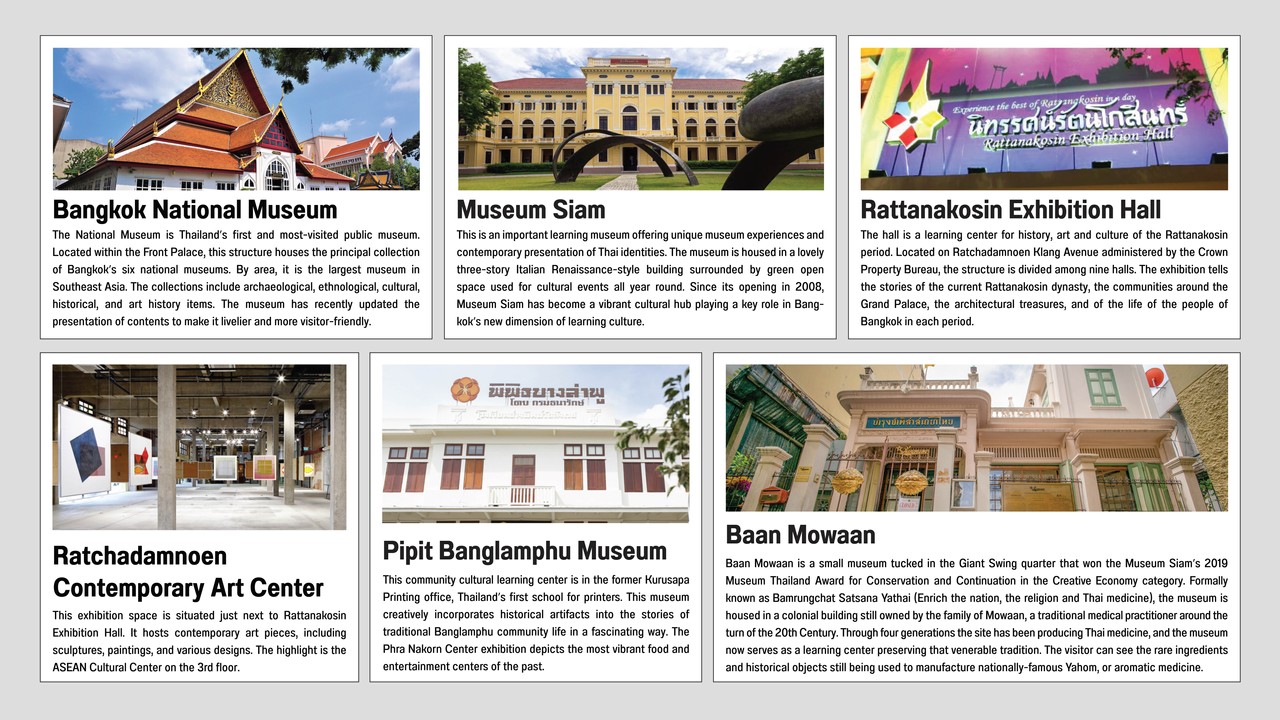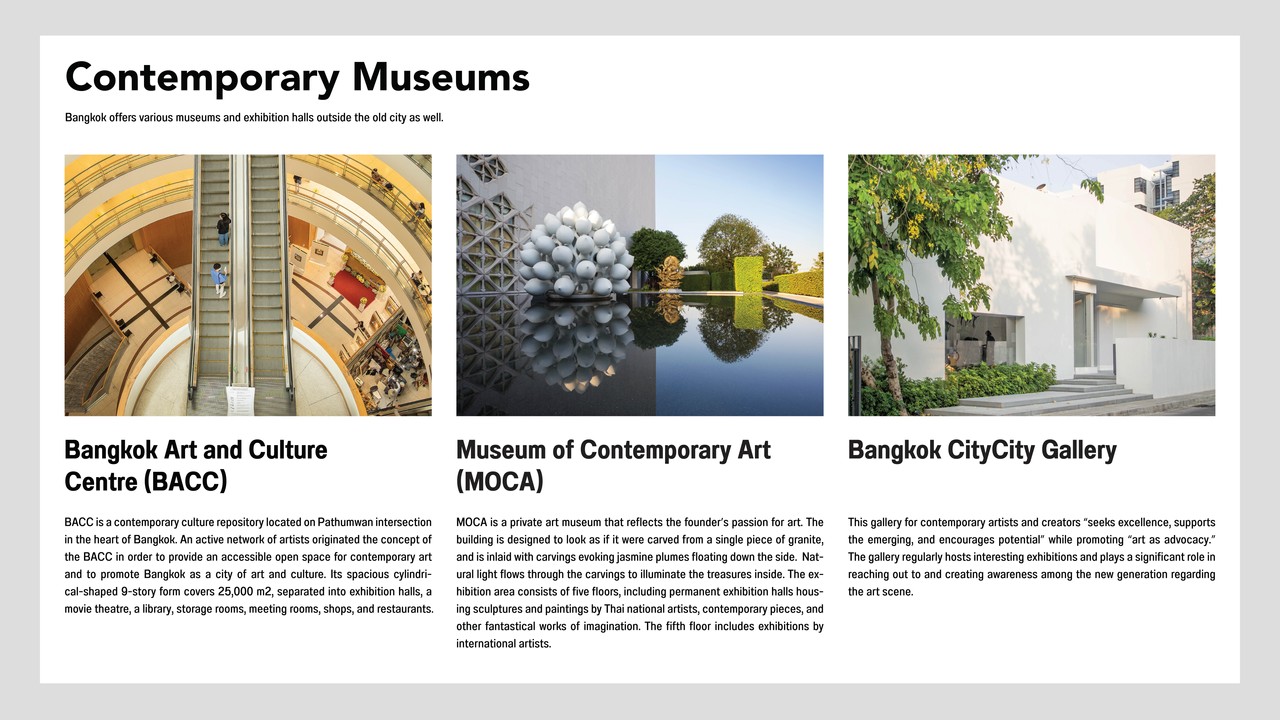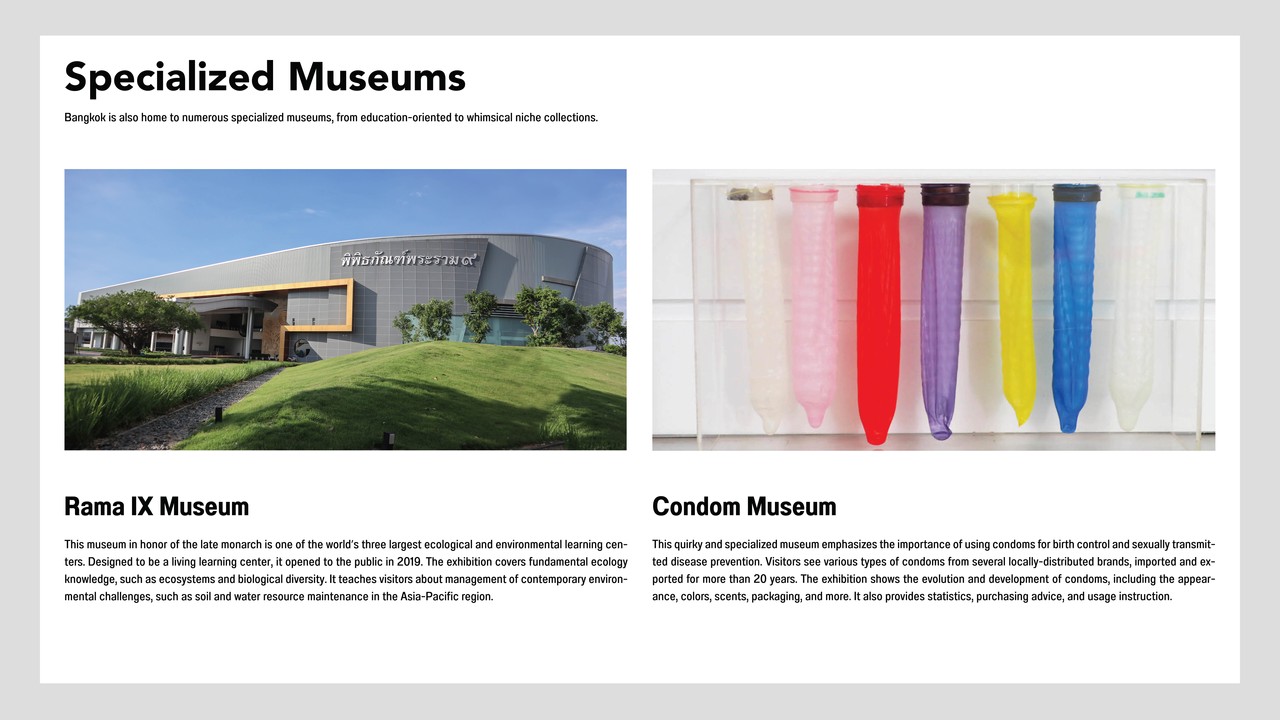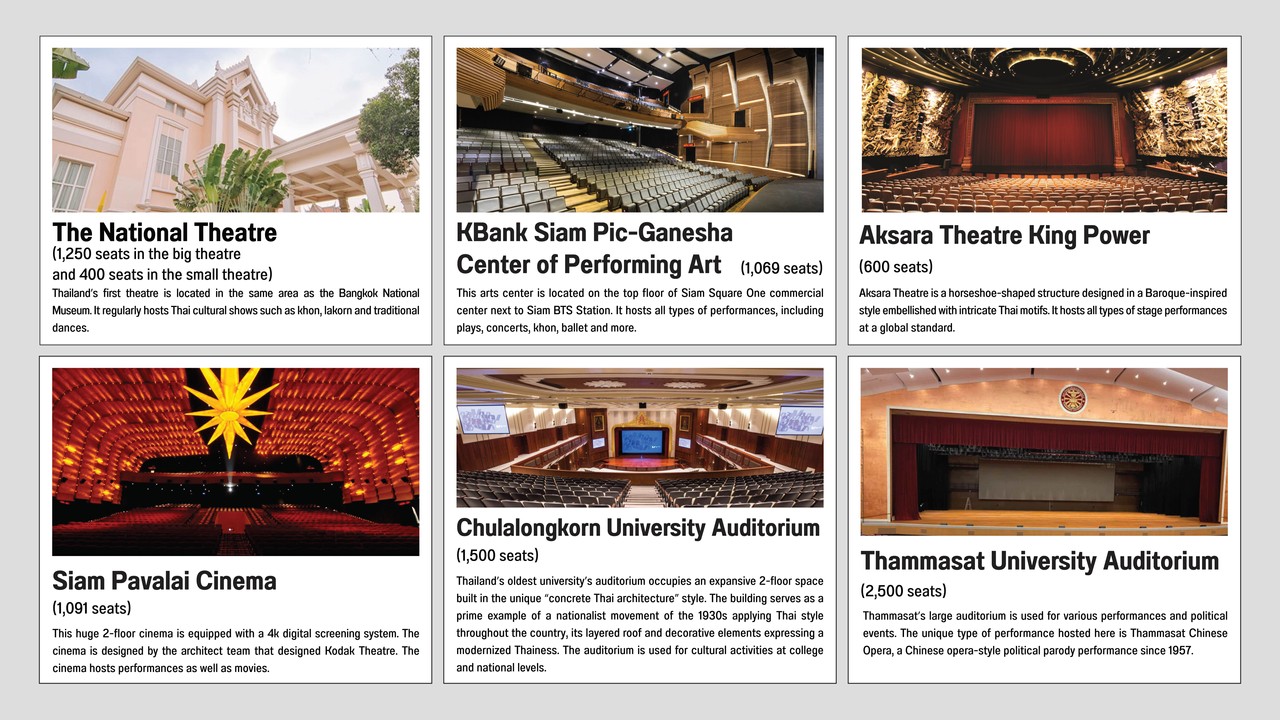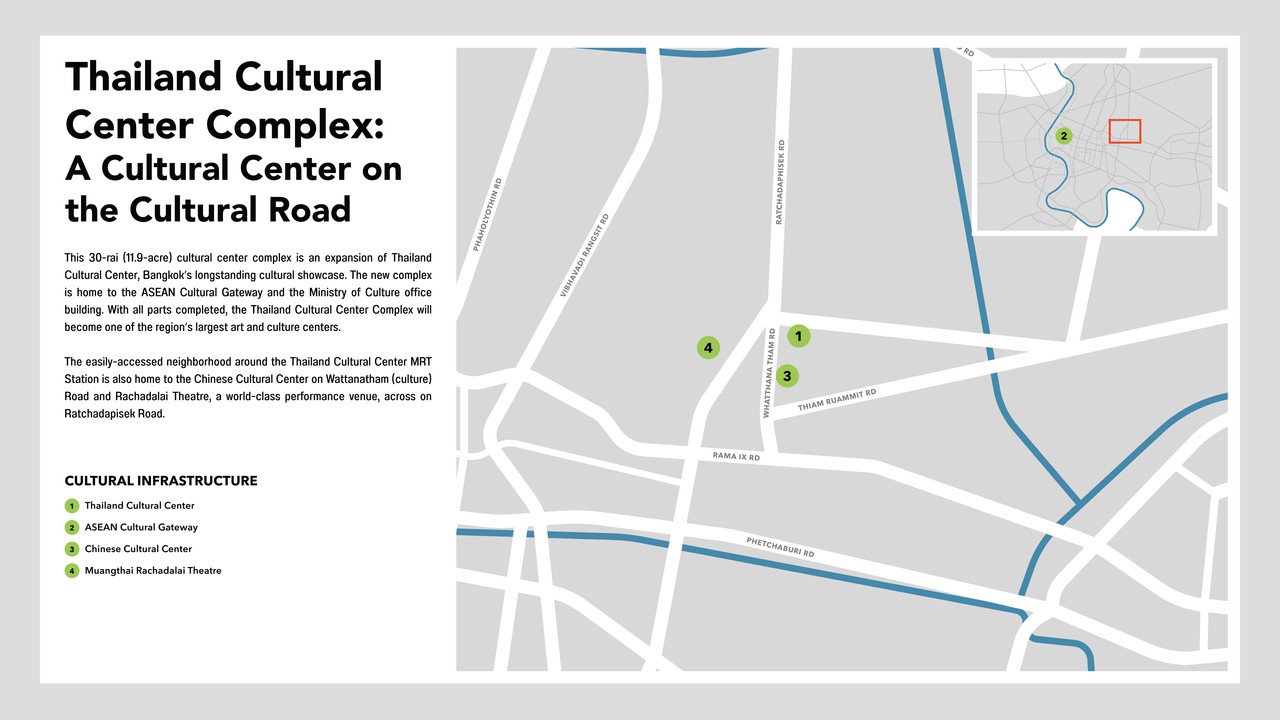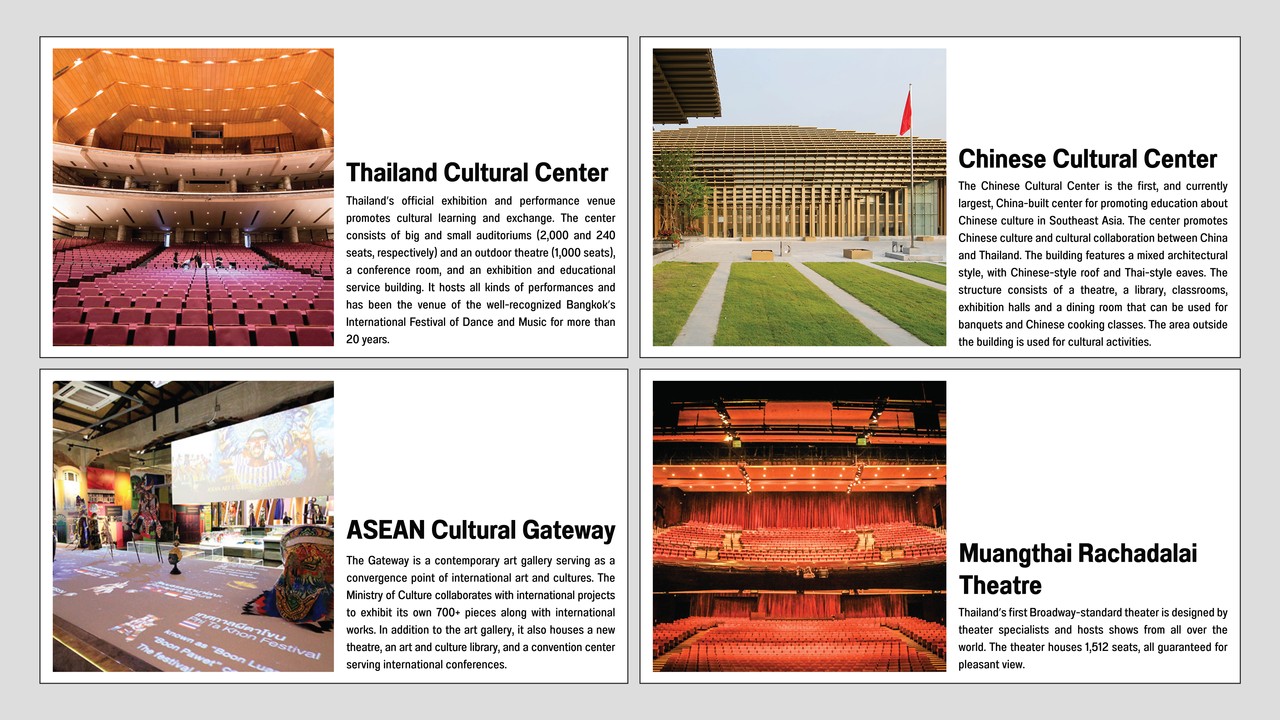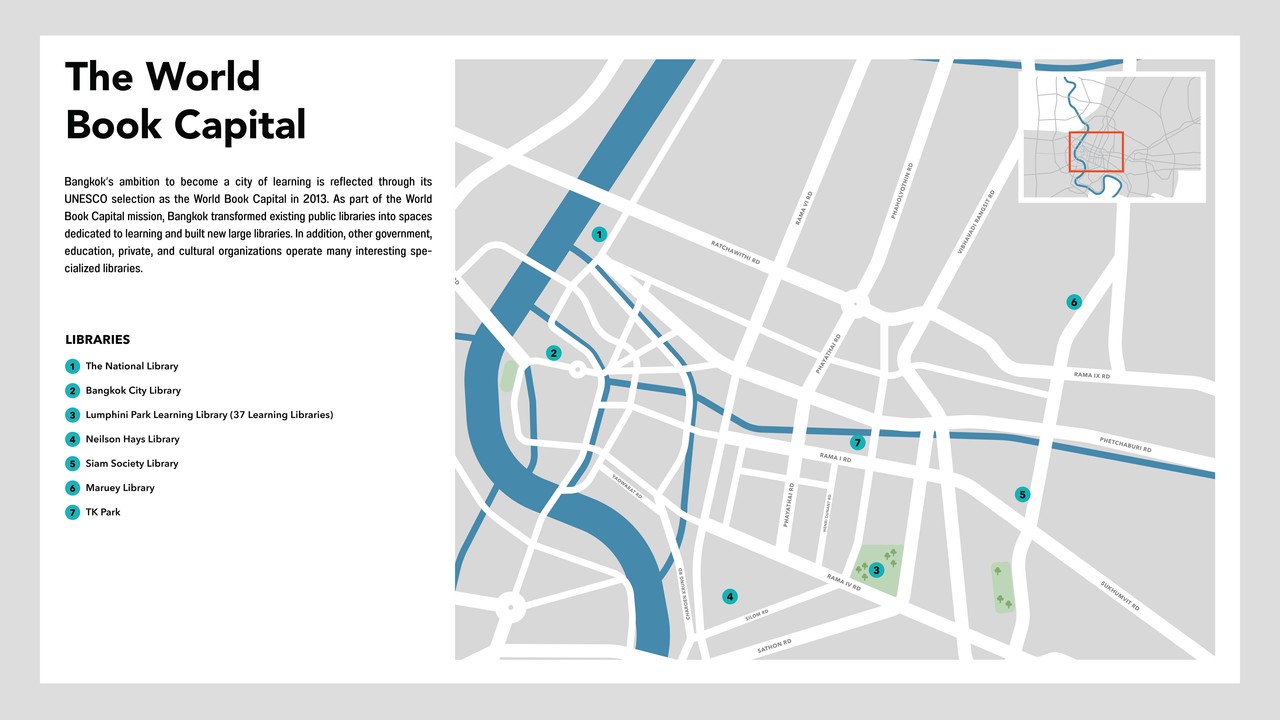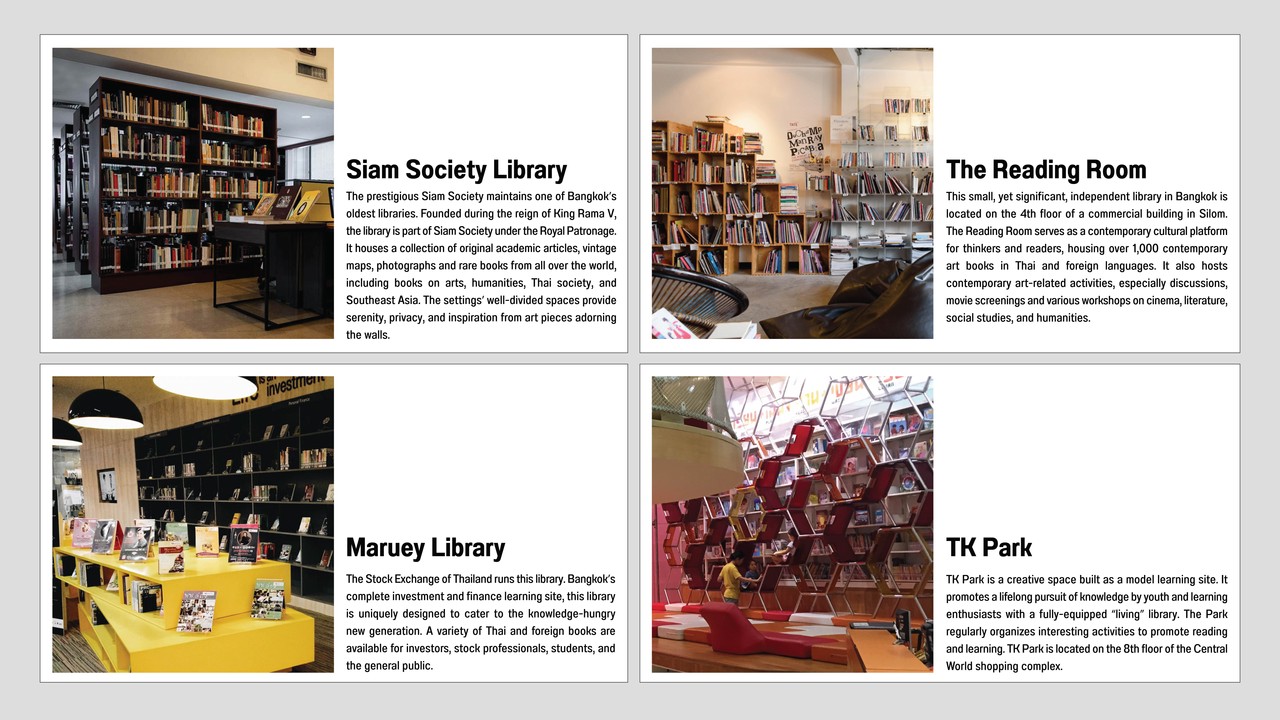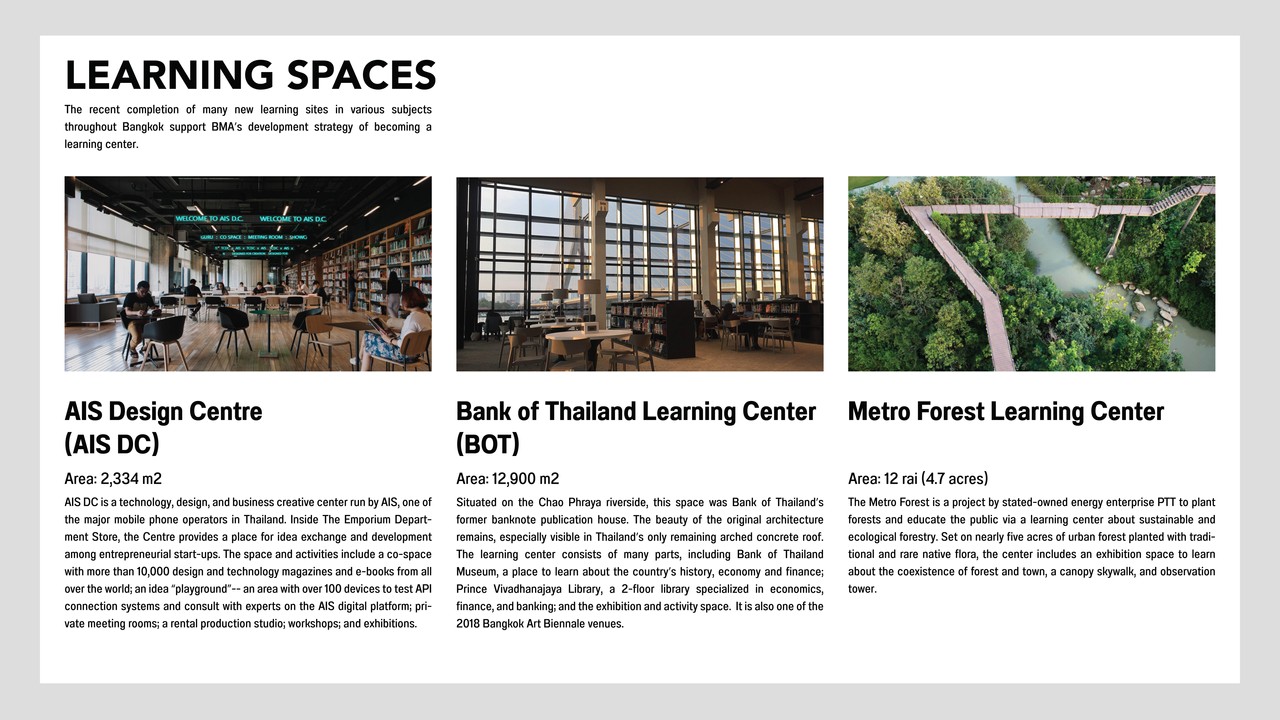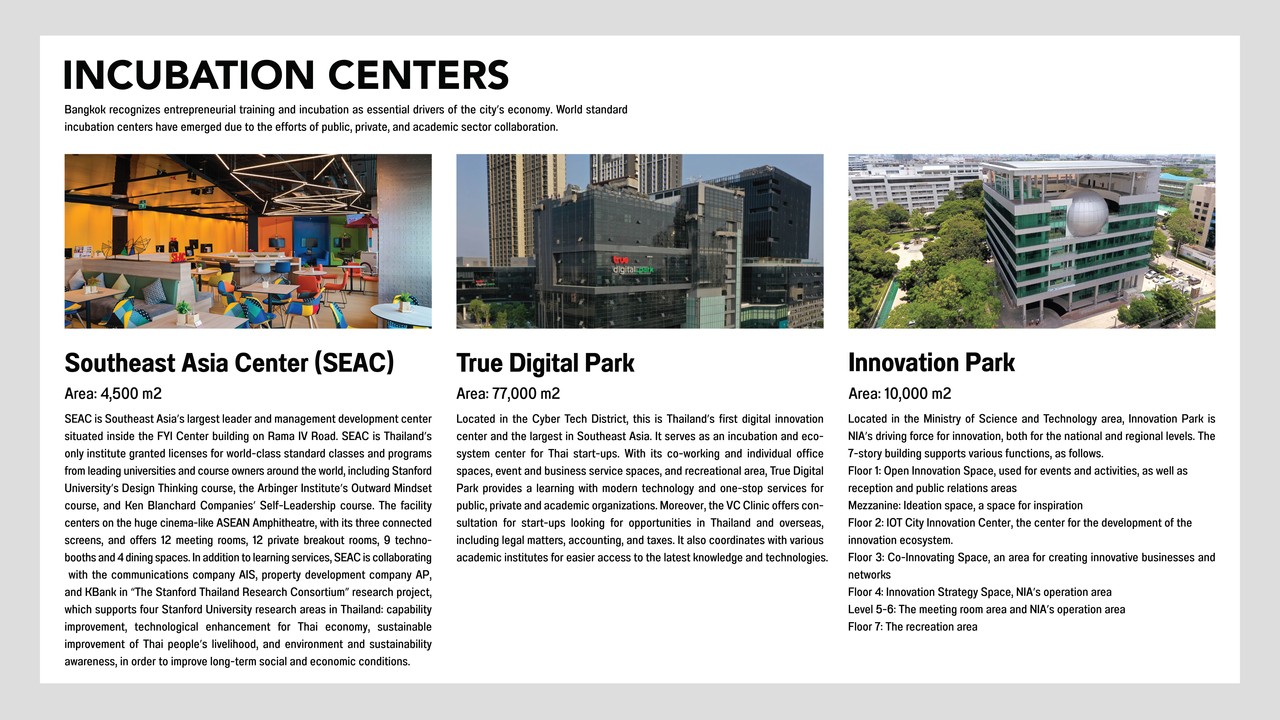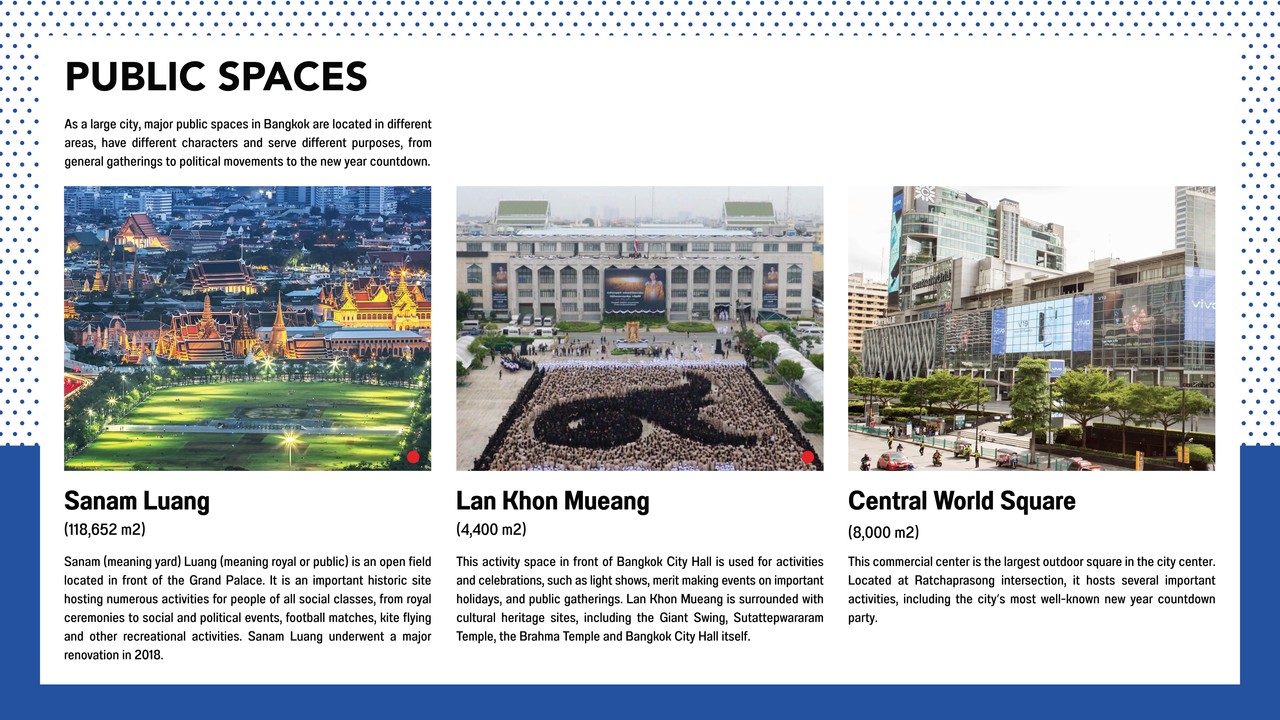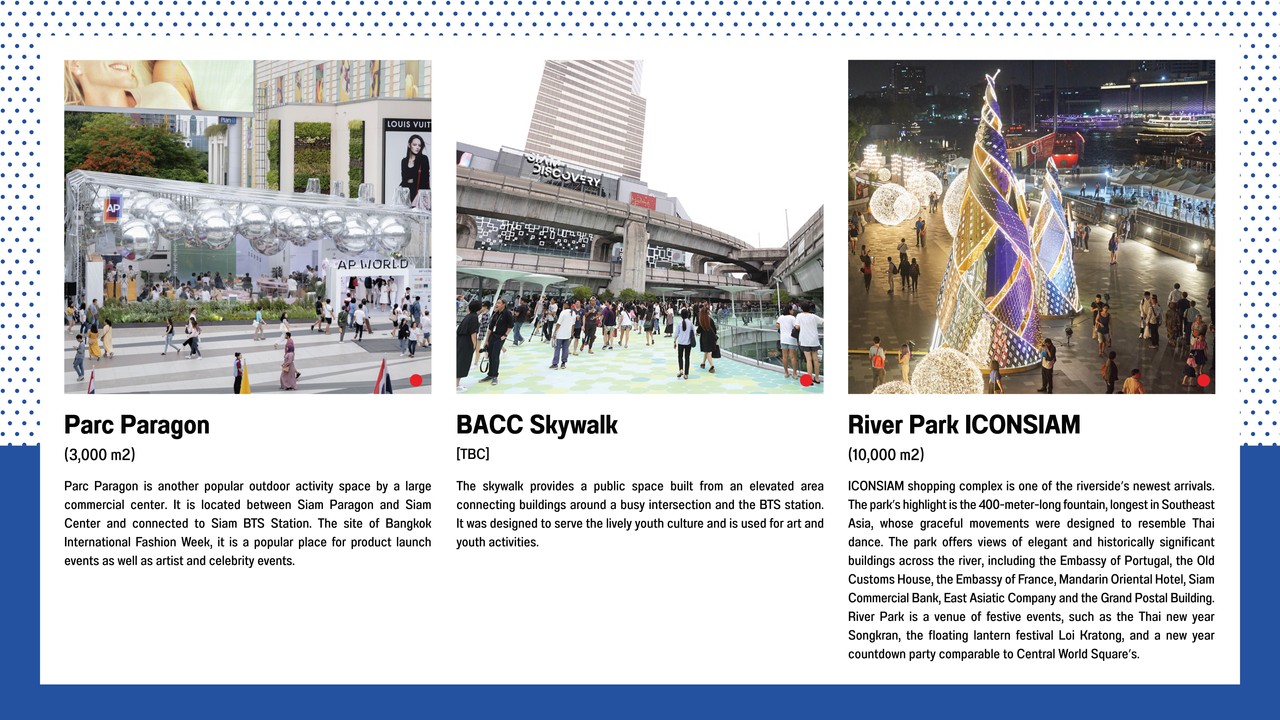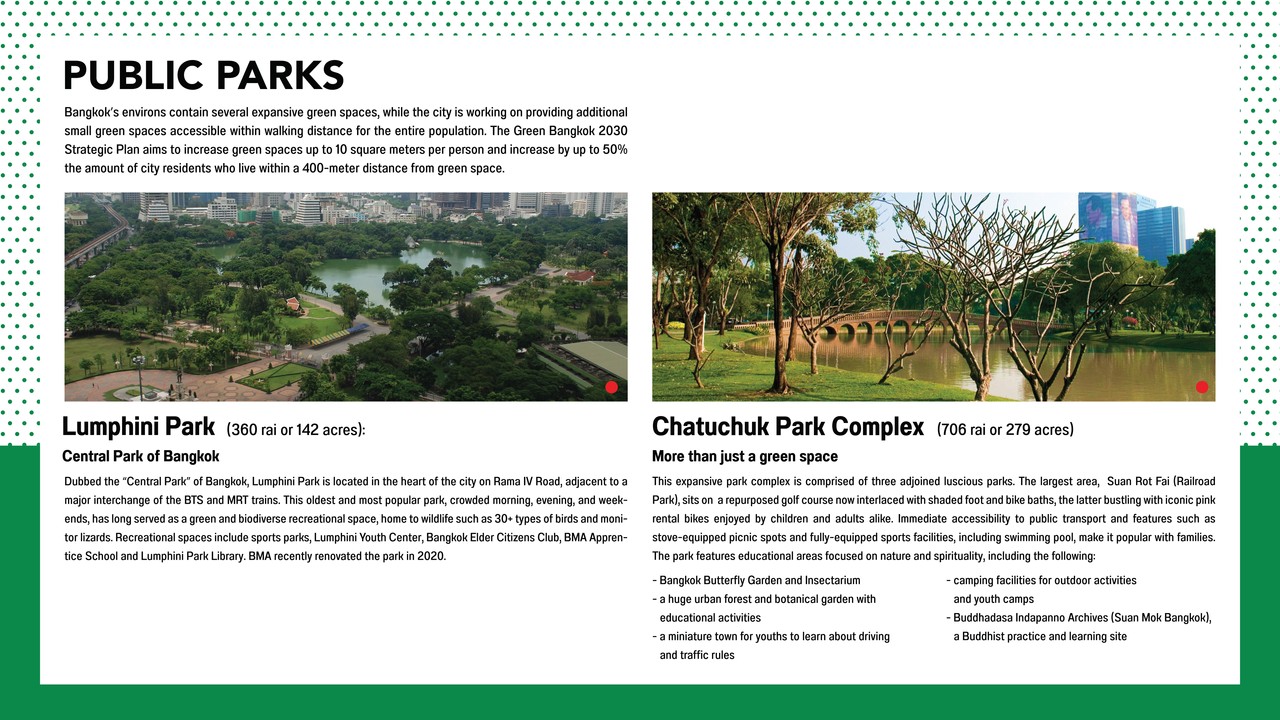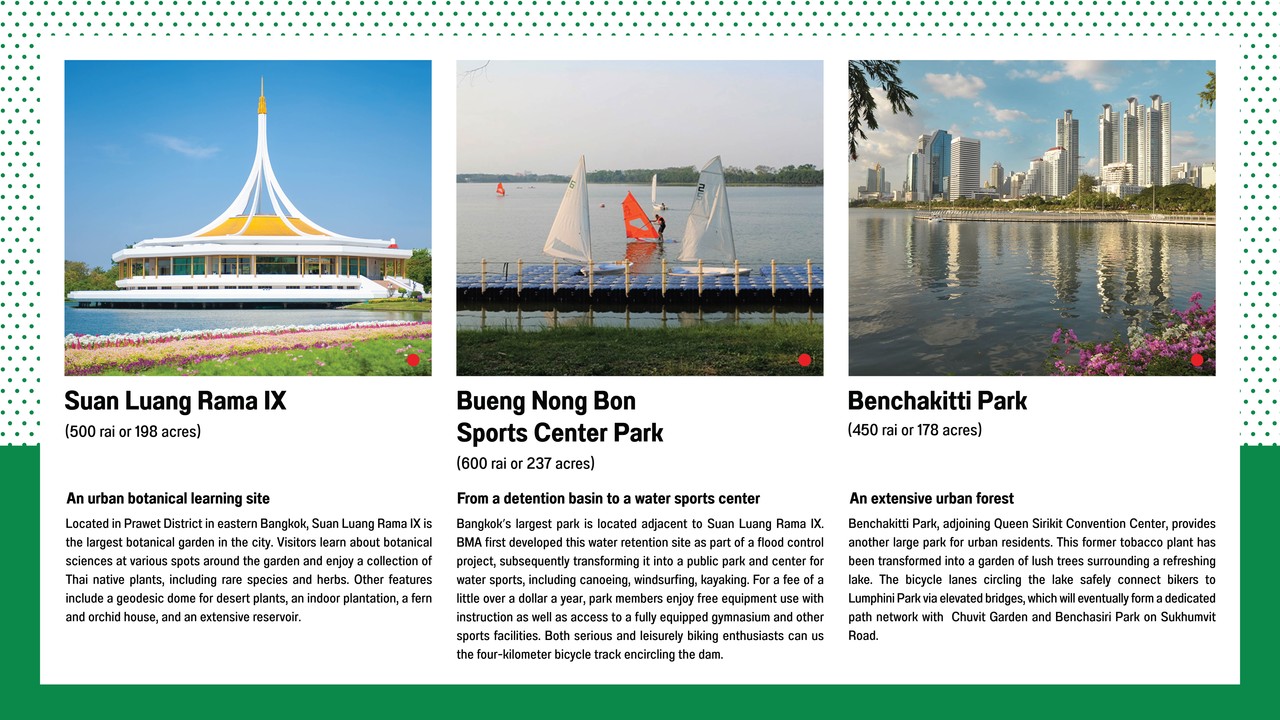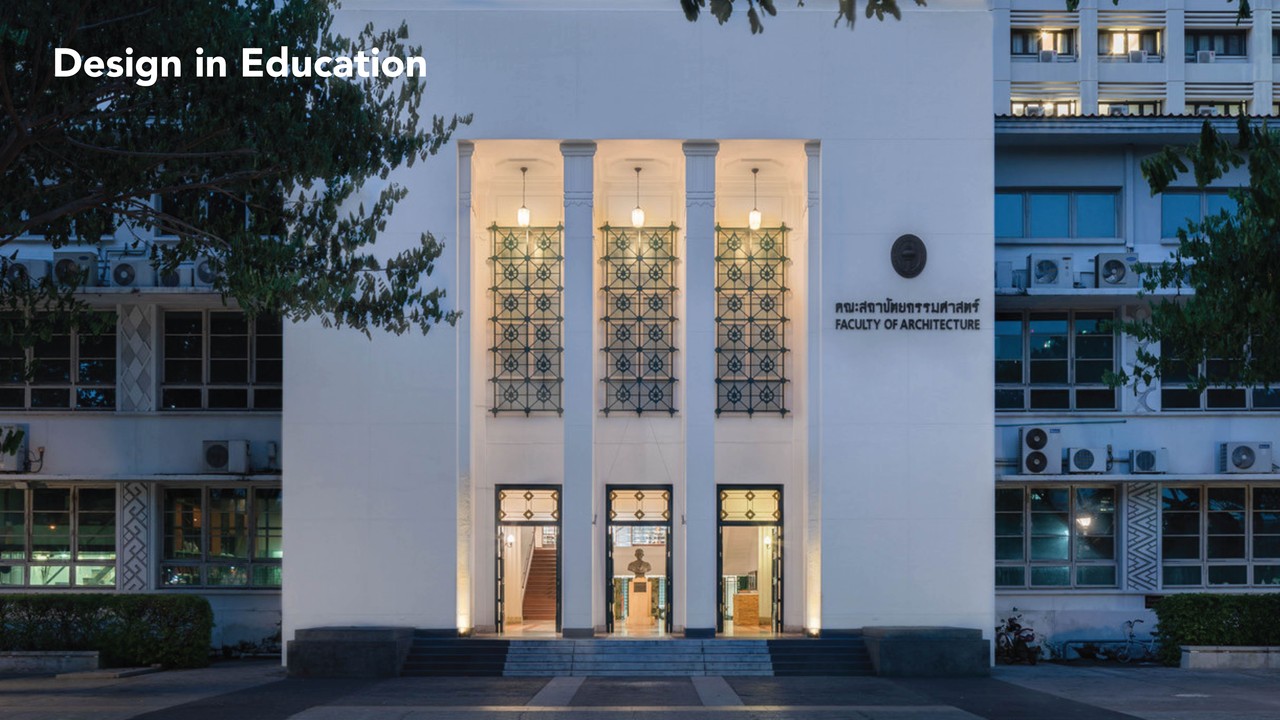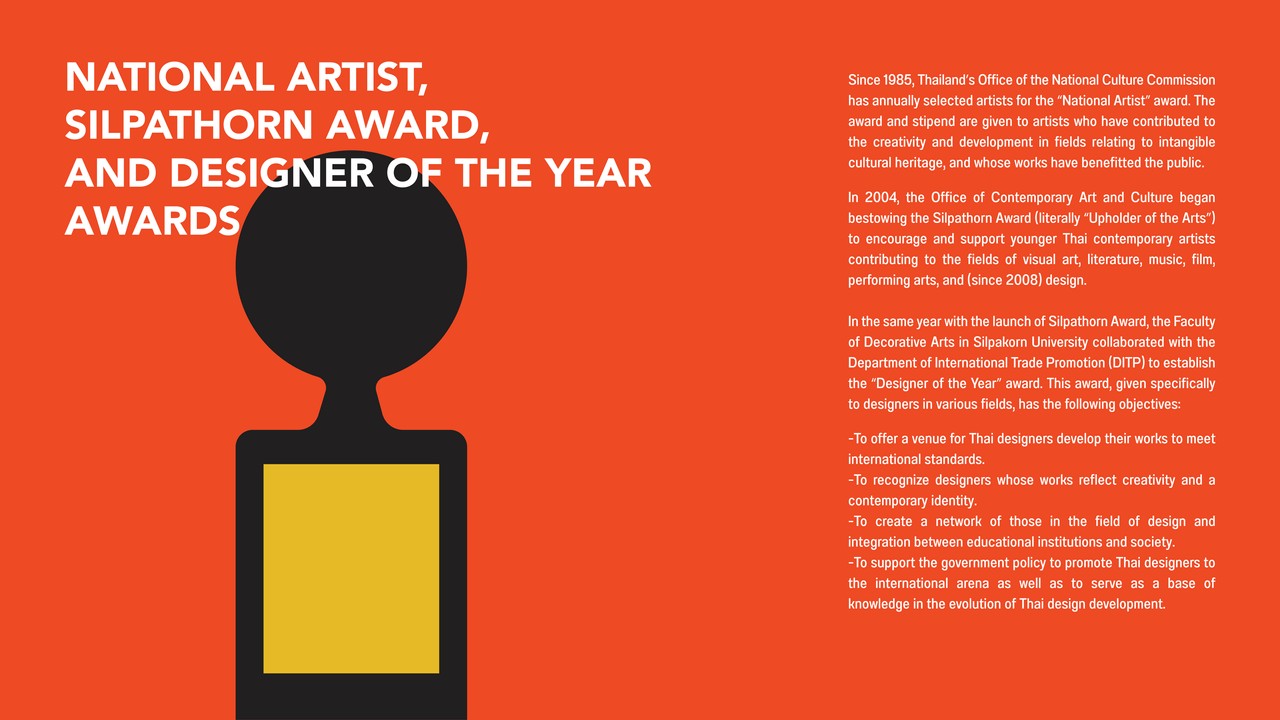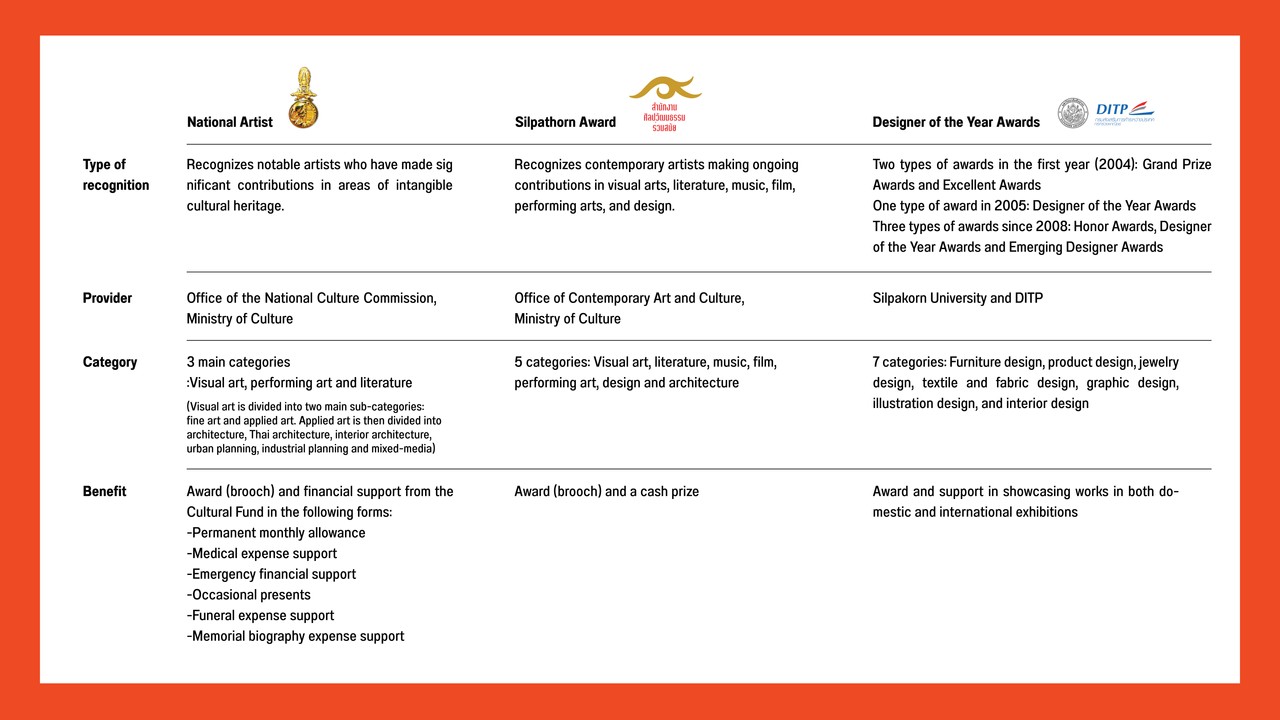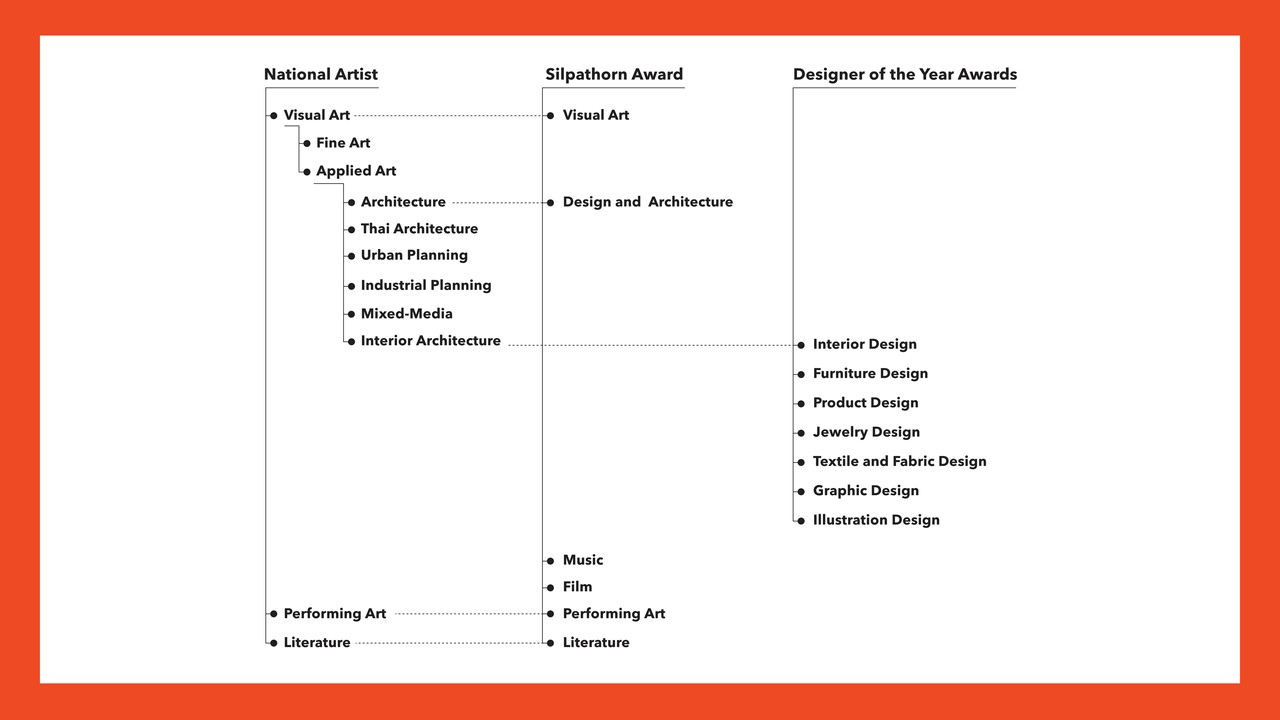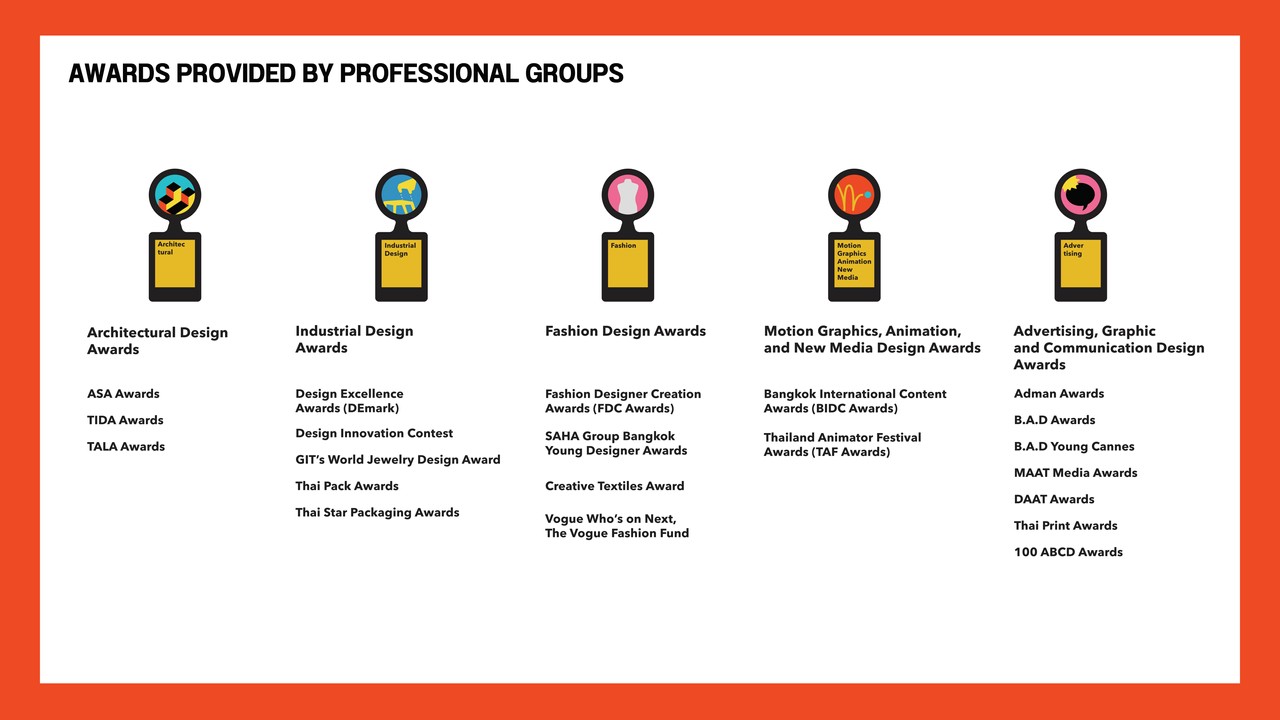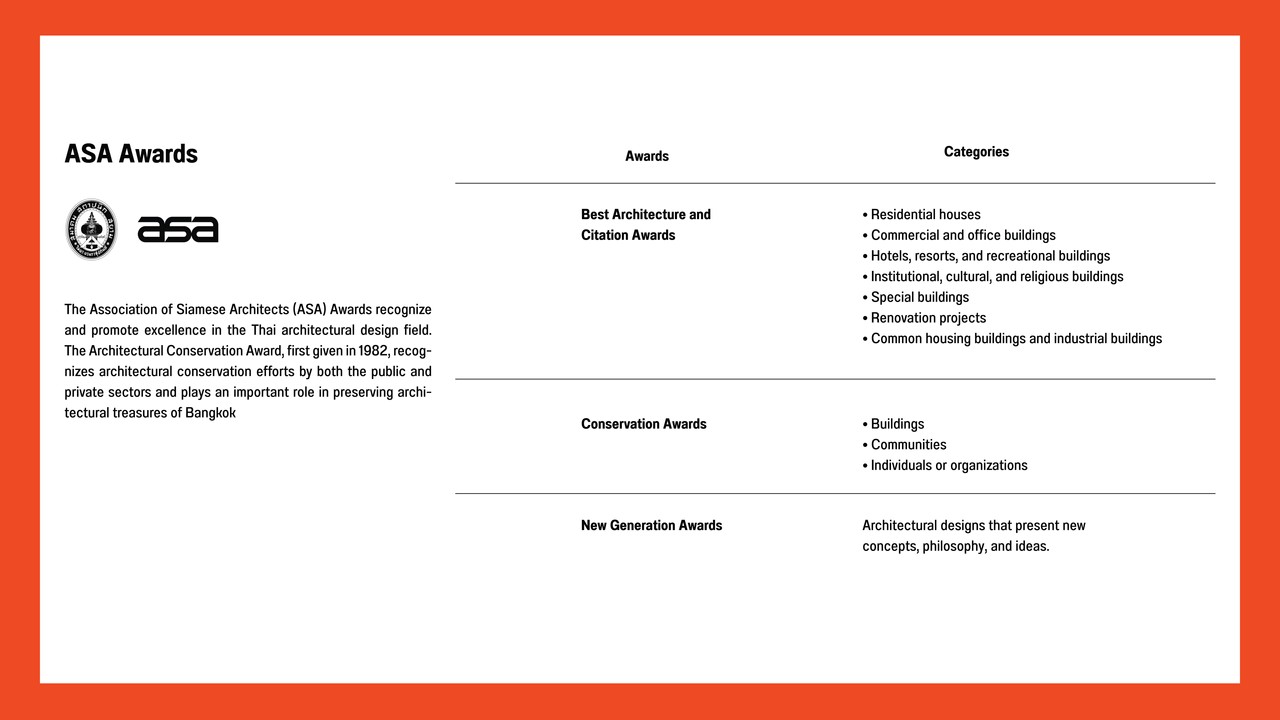Bangkok As A City of Design
Where Local Creativity Joins a World Community
กรุงเทพฯ ที่พร้อมยกระดับเมืองด้วยการออกแบบ
ในปี 2019 กรุงเทพฯ ได้รับเลือกให้เข้าร่วมเครือข่ายเมืองสร้างสรรค์ของยูเนสโกในฐานะเมืองแห่งการออกแบบ จากการที่กรุงเทพฯ สามารถพิสูจน์ให้เห็นถึงศักยภาพและความเอาจริงเอาจังในการใช้การออกแบบเป็นเครื่องมือสำคัญในการพัฒนาเมือง
รากฐานด้านการออกแบบของกรุงเทพฯเริ่มต้นจากการสานต่อสุนทรียภาพ อัจฉริยภาพ ทักษะความเชี่ยวชาญ และสินทรัพย์ทางวัฒนธรรมจากราชอาณาจักรอยุธยา ดังจะเห็นได้อย่างชัดเจนในย่านเมืองเก่าที่เต็มไปด้วยงานออกแบบดั้งเดิม และการผสมผสานเข้ากับงานออกแบบสมัยใหม่ที่พบเห็นได้ทั่วไปในกรุงเทพฯ
ระบบการศึกษาแบบตะวันตกคือตัวช่วยชั้นดีในการเปลี่ยนอัจฉริยภาพท้องถิ่นให้เป็นการศึกษาด้านการออกแบบที่มีมาตรฐาน การสถานปนาคณะมัณฑนศิลป์ มหาวิทยาลัยศิลปากรที่มีศิลปินชาวอิตาลี ศิลป์ พีระศรี (Corrado Ferci) เป็นผู้วางรากฐานในปี 1956 คือหมุดหมายสำคัญในการเริ่มต้นการศึกษาด้านการออกแบบในแขนงต่างๆ ซึ่งกลายเป็นแรงขับเคลื่อนอุตสาหกรรมการออกแบบของกรุงเทพฯมาจนถึงปัจจุบัน
นอกจากการออกแบบผลิตภัณฑ์ แฟชั่น และอุตสาหกรรมโฆษณาที่สร้างชื่อเสียงให้กรุงเทพฯ ในด้านการออกแบบ ในระยะหลายปีที่ผ่านมา ยังเห็นงานออกแบบด้านสถาปัตยกรรม โดยเฉพาะสถาปัตยกรรมเมือง (Urban design) เฟื่องฟูเป็นอย่างมาก ด้วยแรงผลักดันของนักออกแบบรุ่นใหม่ที่กระตือรือร้นและพร้อมเป็นส่วนหนึ่งในการขับเคลื่อนเมืองให้น่าอยู่ ครอบคลุม และยั่งยืน เมื่อรวมเข้ากับความสามารถในการปรับตัวและปรับใช้สิ่งรอบตัวเพื่อแก้ปัญหาในชีวิตประจำวัน ที่กลายเป็นภาพจำของใครหลายคนเมื่อนึกถึงกรุงเทพฯ มันจึงกลายเป็นเสน่ห์แสนพิเศษที่สร้างความโดดเด่นให้กับการออกแบบของเมืองแห่งนี้
www.bangkokcityofdesign.com
กรุงเทพฯ เมืองที่ใช้การออกแบบในทุกมิติ
ออกแบบสร้างกรุงเทพฯ
กรุงเทพมหานครคือเมืองหลวงของประเทศไทย เมืองที่หลอมรวมวัฒนธรรมและวิถีชีวิตของคนหลากหลายเชื้อชาติมาตั้งแต่อดีตจนถึงปัจจุบัน มั่งคั่งด้วยทุนทางวัฒนธรรม มีศิลปะ สถาปัตยกรรม และการออกแบบอันเป็นเอกลักษณ์ ที่ดึงดูดให้นักท่องเที่ยวทั่วโลกมาเยือนกว่า 20 ล้านคนต่อปี
การออกแบบมิใช่เพียงสุนทรีศาสตร์หรือความงามที่ปรากฏต่อสายตาเท่านั้น หากแต่เป็นกลไกสำคัญในการขับเคลื่อนกรุงเทพมหานคร นับตั้งแต่การออกแบบผังเมืองยุคก่อร่างสร้างกรุงรัตนโกสินทร์ ไปจนถึงการสร้างอัตลักษณ์ของชาติ จวบจนสมัยปัจจุบันการออกแบบก็ยังคงเป็นเครื่องมือสำคัญในการพัฒนาบ้านเมือง อาทิ การขยายระบบขนส่งมวลชน การฟื้นฟูเกาะรัตนโกสินทร์และเมืองเก่า รวมถึงการขยายสนามบินสุวรรณภูมิเพื่อให้กรุงเทพฯ เป็นศูนย์กลางที่เชื่อมโยงอาเซียนกับโลก เหล่านี้ล้วนเป็นกิจกรรมทางเศรษฐกิจที่ต้องใช้การออกแบบเป็นตัวขับเคลื่อนทั้งสิ้น
อุปนิสัยสบายๆ ยิ้มแย้มแจ่มใส เป็นลักษณะเฉพาะของชาวกรุงเทพฯ ที่สะท้อนออกมาผ่านวิถีชีวิตและการออกแบบ ความยืดหยุ่นทางปัญญาช่วยให้ชาวกรุงเทพฯ เผชิญหน้ากับปัญหาต่างๆ ได้ดีกว่า กรุงเทพฯ จึงเป็นเมืองที่มีความสามารถในการปรับตัวให้เข้ากับสถานะการณ์ ซึ่งเป็นคุณลักษณะสำคัญในการรับมือกับความท้าทายในศตวรรษที่ 21 ที่เต็มไปด้วยความไม่แน่นอน
กรุงเทพมหานครมีโครงสร้างพื้นฐานที่เหมาะกับการเติบโตของธุรกิจสร้างสรรค์ มีความหลากหลายของผู้คนและความเข้มแข็งของการศึกษาด้านการออกแบบ มีพื้นที่เรียนรู้สาธารณะ อีกทั้งยังมีกิจกรรมด้านการออกแบบที่จัดโดยภาครัฐและเอกชน สร้างความคึกคักตลอดทั้งปี ทำให้เมืองนี้เป็นที่รู้จักและยอมรับในฐานะศูนย์กลางของการออกแบบในภูมิภาคอาเซียน
ออกแบบสร้างภาพลักษณ์
การออกแบบเป็นเครื่องมือสำคัญในการพัฒนาเมือง และยกระดับคุณภาพชีวิตคน สนามฟุตบอลชุมชนคลองเตย เป็นโครงการตัวอย่างที่ใช้การออกแบบเข้ามาแก้ปัญหาคุณภาพชีวิตคนในชุมชนแออัด จนได้รับการยกให้เป็น 1 ใน 25 สิ่งประดิษฐ์ที่สร้างสรรค์ที่สุดของโลกโดยนิตยสาร Time จะเห็นได้ว่าการออกแบบนั้นเป็นเครื่องมือในการสร้างภาพลักษณ์ที่ดีให้กับกรุงเทพมหานคร
กิจกรรมเกี่ยวกับการออกแบบเกิดขึ้นตลอดทั้งปีในกรุงเทพฯ เป็นตัวชี้วัดถึงความแข็งแกร่งของอุตสาหกรรมออกแบบไทย เทศกาลงานออกแบบกรุงเทพฯ (Bangkok Design Week) เป็นอีกหนึ่งกิจกรรมสำคัญของกรุงเทพฯ ที่ส่งแรงกระเพื่อมไปยังหลากหลายธุรกิจ ทั้งท่องเที่ยว รีเทล โรงแรม ฯลฯ ทำให้เกิดความร่วมมือของภาครัฐและเอกชน ช่วยขับเคลื่อนเศรษฐกิจ ดึงดูดผู้ชมและนักท่องเที่ยวกว่า 400,000 คน และที่สำคัญคือทำให้คนทั่วโลกจดจำกรุงเทพฯ ในฐานะมหานครแห่งการออกแบบ
ออกแบบสร้างชุมชน
การรวมตัวกันอย่างหนาแน่นของคนทำงานออกแบบในกรุงเทพฯ ทำให้เกิดปรากฏการณ์การเกิดขึ้นของย่านสร้างสรรค์ (Creative Districts) ที่ใช้การออกแบบเป็นเครื่องมือในการต่อยอดมรดกทางวัฒนธรรม ช่วยพลิกฟื้นย่านเก่า ชุมชนเก่า ให้กลับมามีชีวิต สร้างความเข้มแข็งให้กับชุมชน ก่อให้เกิดธุรกิจใหม่ๆ สร้างมูลค่าทางเศรษฐกิจได้อีกด้วย
นอกจากนี้นักออกแบบที่รวมตัวกันเหล่านี้ยัง เพื่อแก้ปัญหาเมืองหรือชุมชนที่พวกเขาใช้ชีวิต ตัวอย่างเช่น แนวคิดการออกแบบป้ายรถเมล์ใหม่โดยทีมเมย์เดย์ หนึ่งในงานออกแบบเพื่อพัฒนาเมืองกรุงเทพฯ ให้ดีขึ้นโดยนักออกแบบกลุ่มเล็กๆ ในงานเทศกาลออกแบบกรุงเทพฯ ปี 2561 ได้ถูกนำมาต่อยอดโดยกรุงเทพมหานคร เพื่อพัฒนาระบบขนส่งมวลชนสาธารณะ เป็นตัวอย่างของการสร้างเมืองผ่านการออกแบบ และแสดงถึงศักยภาพด้านการออกแบบของกรุงเทพมหานครที่มีอยู่อย่างเต็มเปี่ยม
ออกแบบกระจายรายได้
ความเข้มแข็งของธุรกิจออกแบบในกรุงเทพฯ นั้นเชื่อมโยงกับห่วงโซ่คุณค่าทางเศรษฐกิจไทยไปถึงระดับฐานราก สร้างงานสร้างรายได้ให้กับชุมชนท้องถิ่นทั่วประเทศ ช่วยกระจายรายได้ และลดความเหลื่อมทางเศรษฐกิจ
จากศักยภาพทั้งในด้านของทุนทางเศรษฐกิจ ทุนทางวัฒนธรรม และทุนทางมนุษย์ที่พร้อมสำหรับการพัฒนาการออกแบบ รวมถึงมรดกทางประวัติศาสตร์และวิถีชีวิตร่วมสมัย ทำให้กรุงเทพมหานครได้รับคัดเลือกเป็นเครือข่ายเมืองสร้างสรรค์ ด้านการออกแบบ (Design) โดยองค์การยูเนสโก
Cultural & Design Infrastructures
Creative & Design Districts
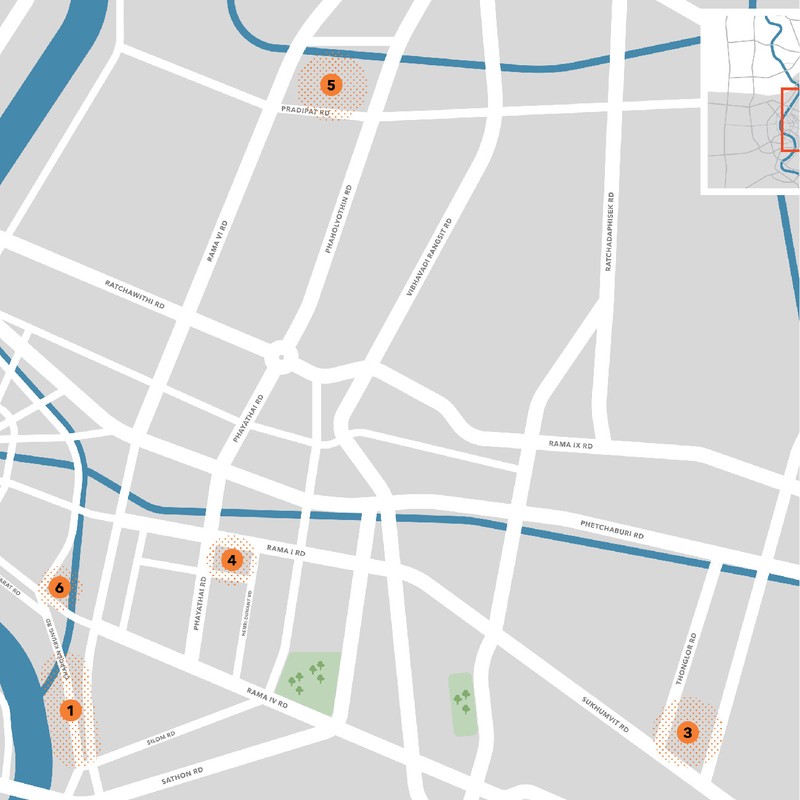

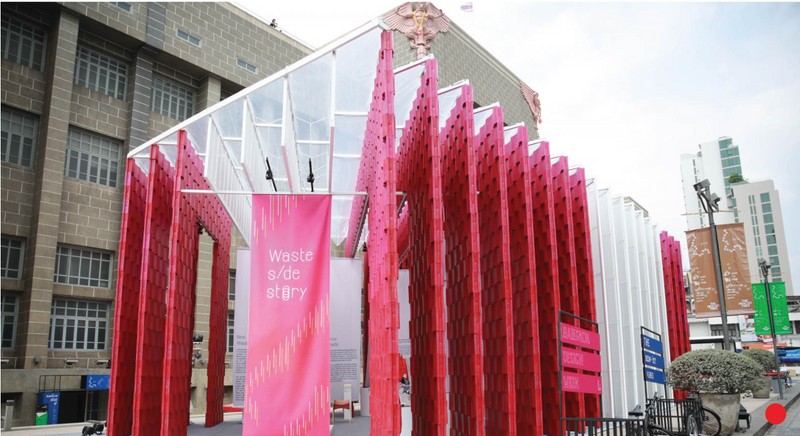
1
Charoenkrung Creative District:
A Creative District Model
A proposal to move the TCDC from a high-end mall to the historic Grand Postal Building sparked new interest in Charoenkrung neighborhood, one of the most culturally diverse areas in Bangkok on the east side of Chao Phraya River. Home to embassies and stately grand hotels along Bangkok's first road, the area is in the middle of a renaissance to reclaim its glory days as the center of Bangkok's modernization. Government and private collaboration efforts are developing this district into a model creative district (reference Question 40).
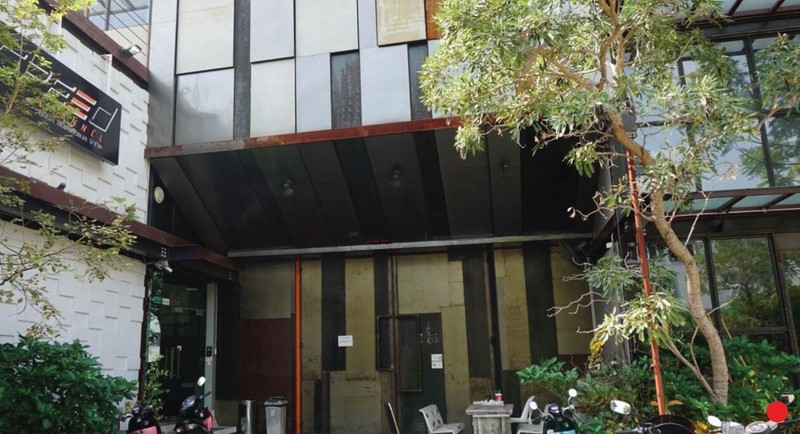
2
Town in Town:
An Agency Town
Bangkok's nucleus of the local advertising and film industry, Town in Town is a large complex built in 1989. After the 1997 financial crisis, the residential buildings were converted into modern home offices, which attracted agencies and studios due to affordable prices. The complex abuts a major expressway and is accessible to nearby popular business and entertainment districts.
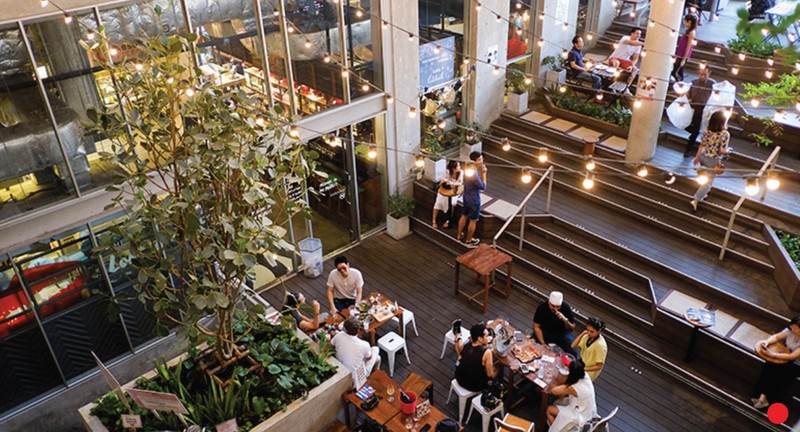
3
Thonglor-Ekamai:
A Hub of Creative Lifestyle
Thonglor-Ekamai is a major lifestyle center where creative professionals gather, including architects, graphic designers, furniture designers, artists, photographers, make-up artists, hair stylists and more. They form a network to share resources, reduce costs and collaborate in proactive marketing strategies in various creative businesses such as design studios, architectural firms and design companies.

4
Siam Square:
A Debut Place for Thai Fashion Brands
Siam Square fosters a vibrant youth culture based on its proximity to Chulalongkorn University and several other prominent schools and tutoring businesses. Over the past several decades emerging fashion designers, many of them new graduates with daring tastes, launched their businesses here. Brands, including legendary Greyhound and Soda, or younger brands like ISSUE, Kloset, It's Happened to be a Closet, and Heidi's Secret, have thrived and become the pillar of the Thai fashion industry. The combination of new trends, entertainment, open spaces, and easy access has made Siam Square a lively and prosperous area.
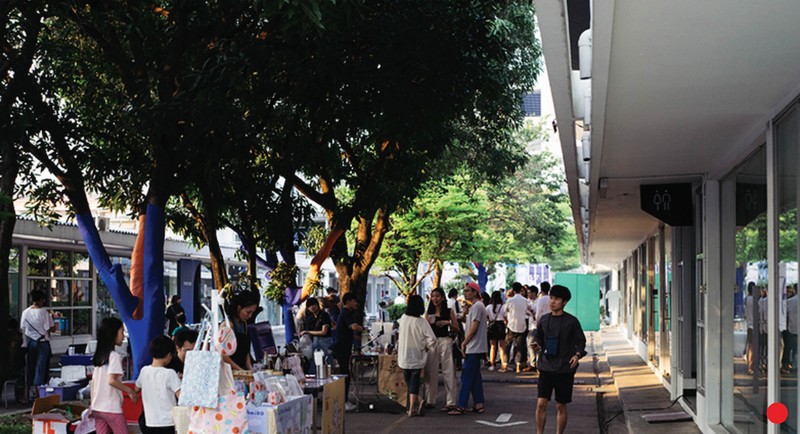
5
Ari-Pradipat:
A Flourishing District
Ari-Pradipat is a popular neighborhood for creative minds, especially Pradipat 17 Alley, home to 33 Space, a "love motel"-turned-rental office for designers and software developers. The complex is designed to facilitate co-working, with a common canteen, a parking lot, cleaning services and 24-hour security. The lively Pradipat food street adds to the vibrant working life and its potential to thrive.
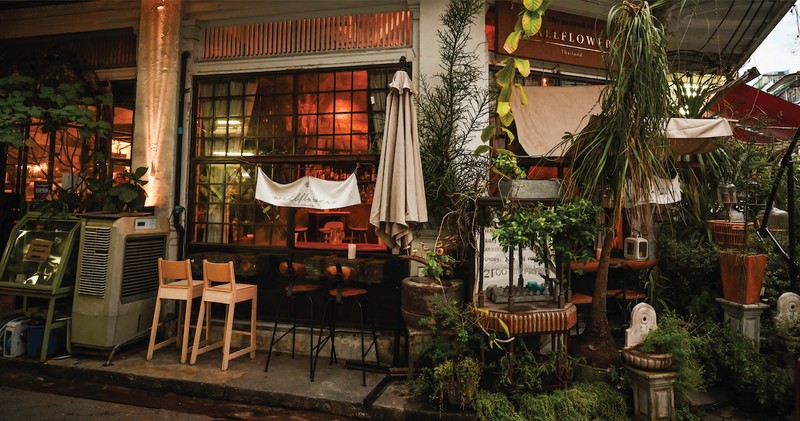
6
Nana-Hualumpong:
Young Architect's District
This old quarter has become a new creative district in town that attracts tourists, designers, architectural firms, and galleries. The unique Sino-Portuguese commercial buildings in Nana Alley are almost a hundred years old and were once residences of Thai, Chinese, and Indian folks, exemplifying Bangkok's charming multicultural environment. The major transportation node Hualumpong Station makes it easy to get around, and reasonably priced restaurants, coffee shops and bars make it an affordable neighborhood for working and living. It is home to the famous Thep Bar, where one can relax with native ingredient cocktails listening to live traditional Thai music.
Craftsmen and Material Districts
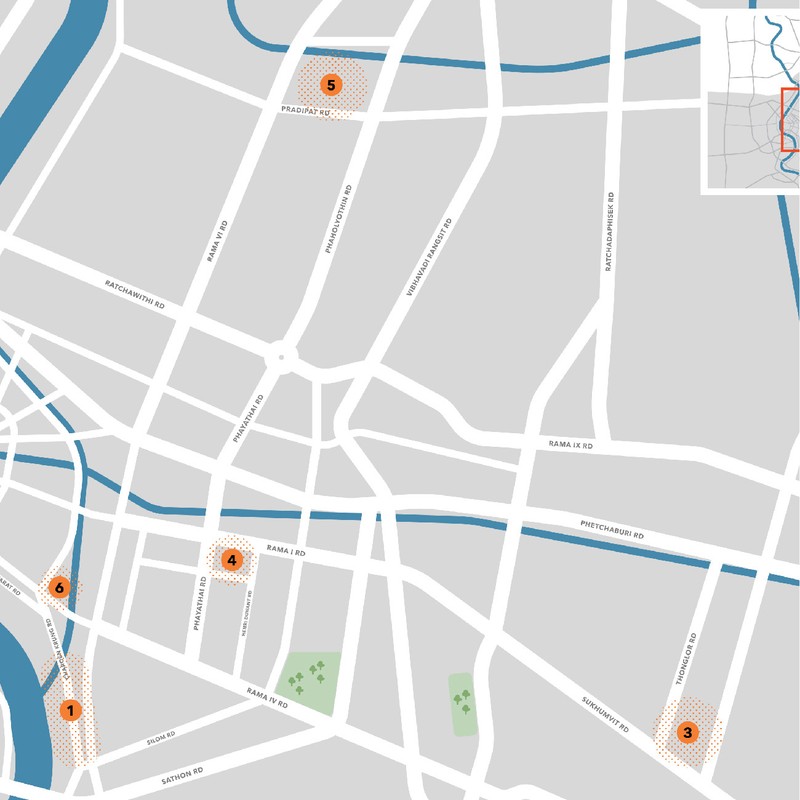
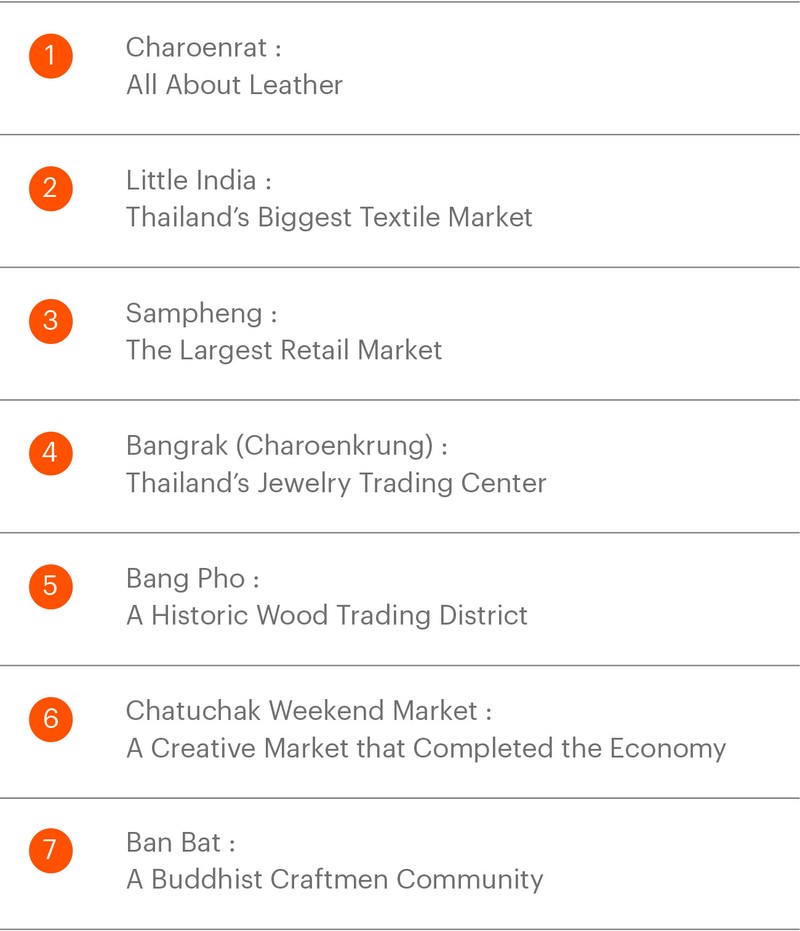
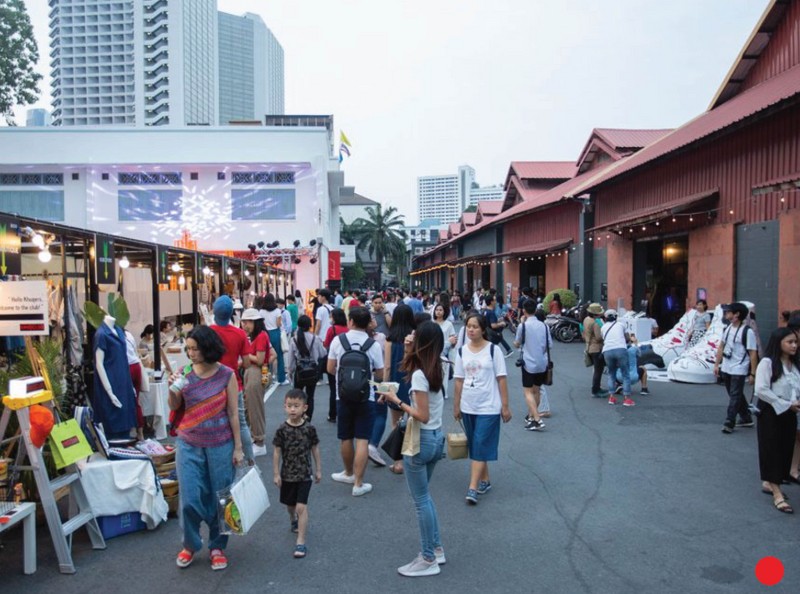
1
Charoenrat:
All About Leather
Charoenrat street is lined with leatherware shops, including vegetable-tanned leatherware, special leather, fashion leatherware, synthetic leather, as well as accessories for leather craft. In addition, some shops offer PVC sheets and fabric for bags, shoes and furniture. Experts also offer leather craft classes. This is the largest leatherware center in Bangkok that creators, entrepreneurs, and DIV lovers appreciate.
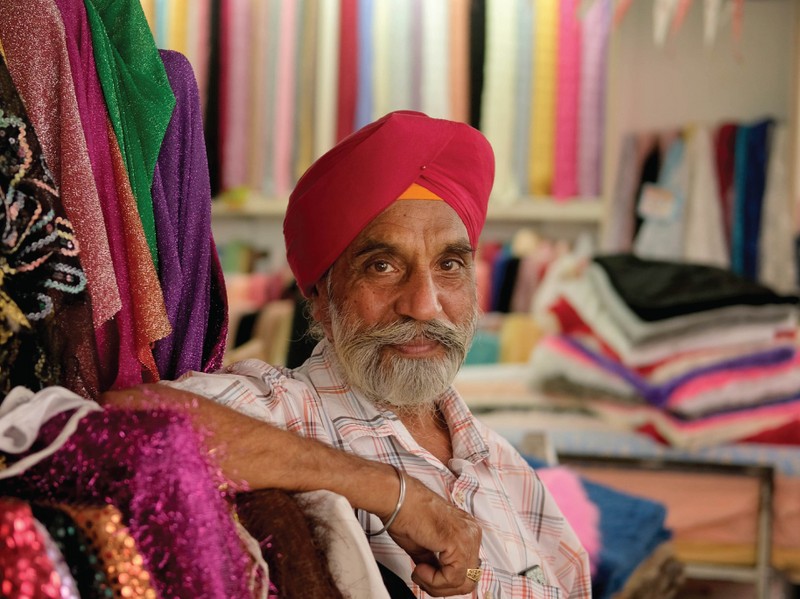
2
Little India:
Thailand's Biggest Textile Market
This longstanding textile and sewing accessories market is a fashion designer's heaven. Most vendors are of Sikh-Indian descent, whose ancestors settled here over a hundred years ago. Nowadays, it is the largest Indian com- munity in Thailand and home to an important Sikh temple.
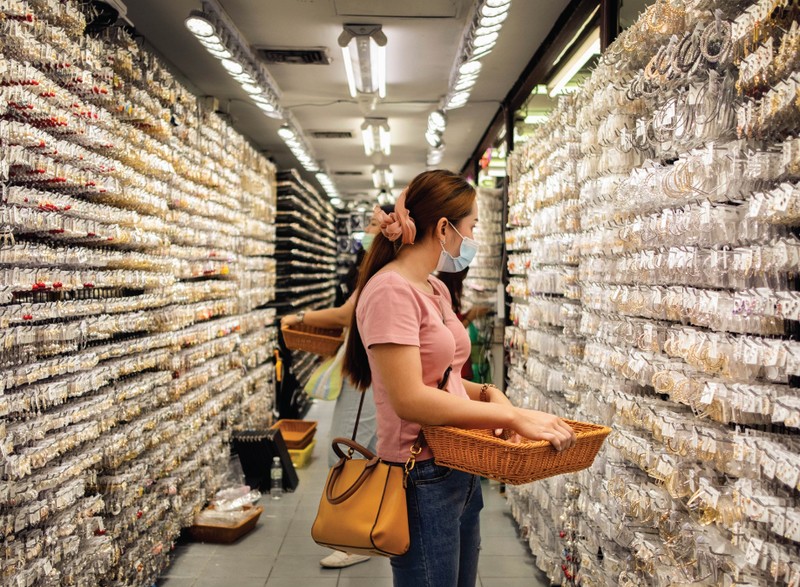
3
Sampheng:
The Largest Retail Market
Nestled between Little India and Chinatown, Sampheng is a historic Chinese trading area dating back to King Rama I period (1782-1809). Today it is Bangkok's largest retail market where a large variety of goods can be found, including gifts, accessories, sewing materials and craft materials.

4
Bangrak (Charoenkrung):
Thailand's Jewelry Trading Center
This old community on Charoenkrung Road was the city's first modern business district. Today, jewelry is the prima- ry industry here, ranging from natural stones to jewelry design to machines and instruments. There are over 192 shops in total. The district is also home to the Gem and Jewelry Institute of Thailand (GIT), which consists of a jewelry museum, laboratories, material and quality inspection laboratories, and almost 10,000 items of industry-related information.

5
Bang Pho:
A Historic Wood Trading District
In the past, wood transported to Bangkok arrived at Bang Pho. The areawas then said to be the "path of wood" and later developed into Thailand's largest wood trading district. Today, Bang Pho is well-known among both Thai and international clients for wooden furniture production in a wide variety of styles, as well as wood- carved art and décor pieces.
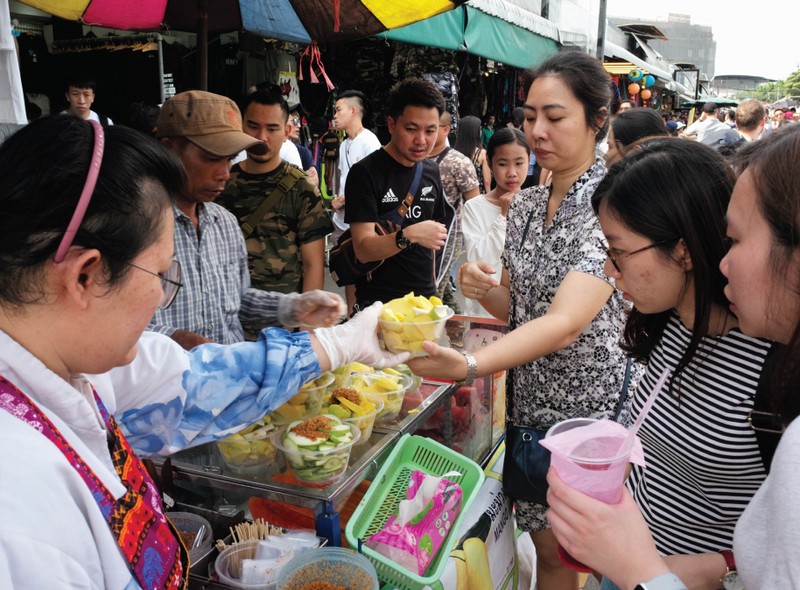
6
Chatuchak Weekend Market:
A Creative Market that Completed the Economy
Also known as JJ Market, the immensely popular Chatuchak Weekend Market is one of the world's largest. The market covers an area of 70 rai (27 acres) and consists of more than 15,000 shops serving over 200,000 visitors per day, 30% of whom are foreign, generating revenue Or approximately 100-120 million baht (CADS 4.3-5.2M) per week. The market is known as "a place you can find just about anything" at a reasonable and negotiable price, including clothing and accessories, antique wood carvings, traditional Thai ceramics, artificial flowers, plants and pets. Additionally, wholesale and retail clothing merchants sell their wares in a weekly Friday night market.

7
Ban Bat:
A Buddhist Craftmen Community
Ban Bat is an old community with its roots in the former Siam capital of Ayutthaya. Today, it is a historic craftsmen community near the Golden Mount, one of the most important Buddhist landmarks of Bangkok. It is the only place in the world where alms bowls are made by hand in a traditional method following 21 steps and eight metal pieces. The technique of joining and sealing the interlocking pieces requires precision and expertise. Recently, Ban Bat has been establishedas an ecotourism attraction whose value is recognized by new designers. They incorporate modern design into the traditional craftsmanship, creating fascinating pieces that enhance the traditional craftsmanship and celebrate the local identity.
